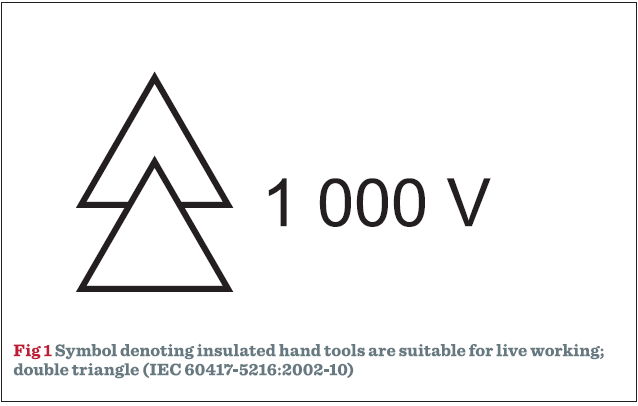A topic which often appears on electrical installation forums is when is it really necessary for an electrician to use insulated hand tools?
In order to answer this question it is necessary to consider the legal aspects.
Anyone engaged in work activities on or near to live conductors must comply with the requirements contained within the Electricity at Work Regulations 1989 (EWR). Regulation 14, Work on or near live conductors, is reproduced below:
No person shall be engaged in any work activity on or so near any live conductor (other than one suitably covered with insulating material so as to prevent danger) that danger may arise unless:
-
it is unreasonable in all the circumstances for it to be dead; and
-
it is reasonable in all the circumstances for him to be at work on or near it while it is live; and
-
suitable precautions (including where necessary the provision of suitable protective equipment) are taken to prevent injury.
Although this regulation clearly permits work on or near live conductors, this can only take place where all three conditions (a) and (b) and (c) above are met. Guidance on and about these conditions can be found in The Electricity at Work Regulations 1989: Guidance on Regulations (HSR25), downloadable free of charge at hse.gov.uk/pubns/books/hsr25.htm
Most types of electrical work should not be carried out on or near live conductors. If danger may otherwise arise, the conductors should be made dead, and be proved to be so, before any work on or near them commences. Furthermore, adequate precautions; such as locking off the means of isolation and placing of notices; should be taken to prevent the conductors from becoming electrically charged during the work, if danger may thereby arise (EWR regulation 13).
Regulation 14 recognises that there are circumstances where it is unreasonable, having regard to all relevant factors, for the equipment to be dead while work proceeds. Examples of work where regulation 14 often applies include electrical testing:
-
to establish whether electrical conductors are live or dead
-
to establish whether the polarity of the incoming supply to an installation is correct or incorrect
-
to measure earth fault loop impedance at the origin of an installation.
Working on or near live conductors should be the exception, not the normally adopted practice.
There is nothing wrong with using insulated hand tools where this is not necessary for safety, such as when working on a circuit known and proven to be dead. But if an electrician finds themselves thinking of using an insulated hand tool as a precaution against injury in connection with working on or near live conductors, they should think again. The use of insulated hand tools, like any other precaution intended to prevent injury, cannot alone make it permissible to work on or near live conductors. As stated previously in this article, such work is permitted only where all three conditions (a) and (b) and (c) of Regulation 14 are satisfied.
Where insulated hand tools are to be relied on as protective equipment for the purposes of condition (c), they should meet the requirements of BS EN IEC 60900:2018 (incorporating corrigendum May 2020) Live working - Hand tools for use up to 1000 V AC and 1500 V DC, they shall be suitable for the work concerned and it should be confirmed prior to each use that they are free from any damage, deterioration or modification that may result in danger.

As shown in Fig 1, clause 4.1.4 of BS EN IEC 60900:2018 states that each (insulated) hand tool shall be legibly and permanently marked with:
- the symbol IEC 60417-5216:2002-10 - Suitable for live working; double triangle shown in Fig 1
-
the electrical working limit for alternating current, 1000 V, immediately adjacent to the double triangle symbol.
Depending on the circumstances, other protective equipment, including protective clothing, may also be required.
Further guidance about protective equipment and other precautions can be found in Electricity at work: Safe working practices (HSG85), downloadable free of charge from hse.gov.uk/pubns/books/hsg85.htm
This publication also covers the decision-making process for whether to work live or dead.



